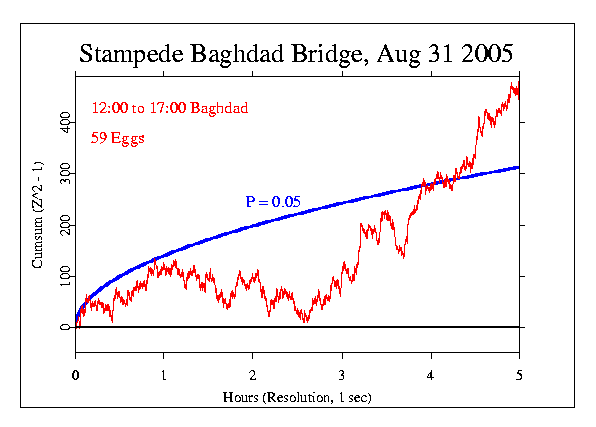|
Up to 1,000 people were crushed to death or drowned after a rumour that
a suicide bomber was about to detonate his explosives spread panic
through a procession of one million Shia pilgrims.
Several hundred more were injured on Wednesday Aug 31 2005
when the procession across a
Baghdad bridge in broiling midday heat was engulfed in panic over rumors
that a suicide bomber was at large.
Many in the huge crowd were already nervous about the possibility of an
attack by extremists from the rival Sunni sect because of a mortar
barrage two hours earlier near the shrine where the marchers were
heading. It was the single biggest confirmed loss of life in Iraq since the
invasion began in March 2003.
Most of the dead -- predominantly women and children -- were trampled to
death on the Imams bridge, although some jumped or were pushed into the
muddy Tigris River about 10 meters below and drowned, officials said.
This is reminiscent of the
The formal prediction was for a five hour period from noon to 17:00. The
result is Chisquare 18470 on 18000 df, with p = 0.0065 and an equivalent
Zscore of 2.483. Coming immediately on the heels of the disastrous
hurricane in New Orleans and the Gulf coast, this response is in
strong contrast -- the day of the hurricane showed no powerful trends.
Of course it is the case that the tragedy continues to unfold, but in
terms of the quasi-formal categories in which we can examine the GCP
results, this outcome is consistent with previous tendencies. Natural
disasters show modest responses, while human-caused disasters tend to
have big responses.

|